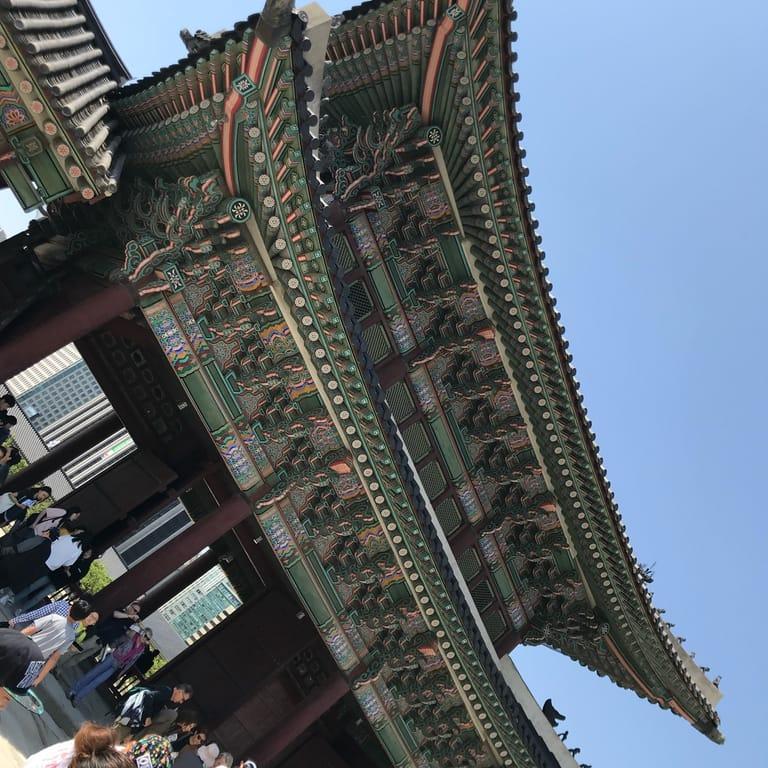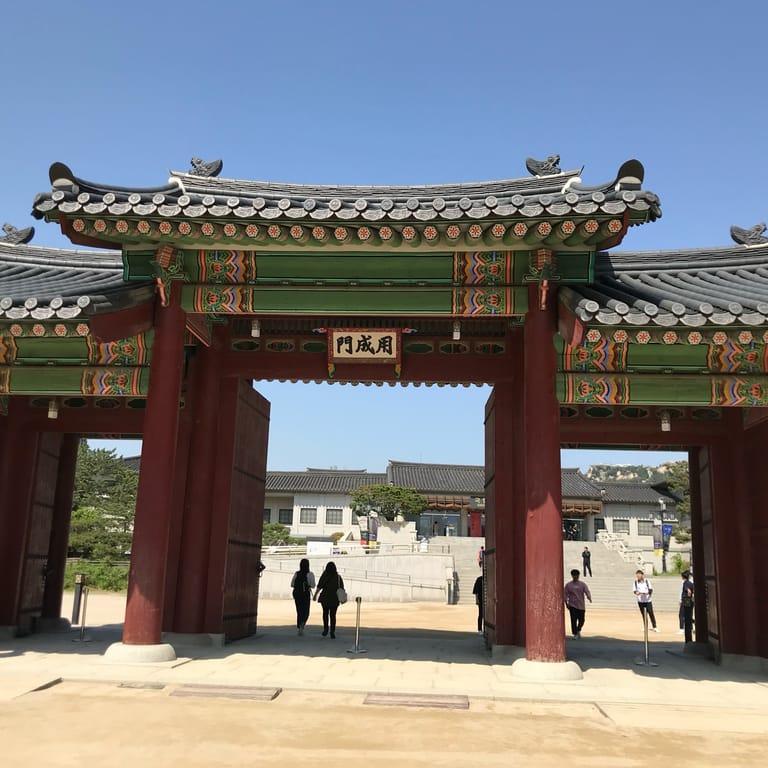Step into the heart of Seoul's vibrant history at Gyeongbokgung Palace , a majestic 14th-century royal residence nestled in Jongno District, Seoul. This stunning palace offers visitors an immersive journey through Korea’s royal past, abundant architectural wonders, and serene garden spaces that invite leisurely exploration.
Visitors often describe a feeling of stepping back in time while wandering the expansive grounds of Gyeongbokgung. The palace’s traditional Korean architecture, combined with beautifully maintained gardens and historical buildings, makes it a captivating spot for cultural enthusiasts and photographers alike. The large scale means you can easily spend hours soaking in every detail and scenic view.
One of the most unforgettable experiences is witnessing the traditional changing of the guard ceremony held twice daily. Visitors dressed in vibrant hanbok attire enjoy free palace admission, adding an extra layer of cultural immersion and photo opportunities. The seasonal changing leaves and open spaces create a peaceful atmosphere, perfect for both active exploring and relaxing moments.
- Opening hours: 9:00 AM to 5:00 PM, closed Tuesdays. Extended hours apply in certain seasons.
- Admission fees: 3,000 KRW for adults (ages 19-64); free admission for youth, seniors, hanbok wearers, and on Culture Day (last Wednesday monthly).
- Guided tours: English-language tours daily at 11:00, 13:30, and 15:30 (except Tuesdays). Small groups can join without reservation; larger groups should book ahead.
- Getting there: Accessible via Gyeongbokgung Station (Line 3, Exit 5) or Gwanghwamun Station (Line 5, Exit 2) on the Seoul Metro.
- What are the opening hours of Gyeongbokgung Palace? The palace is open from 9:00 AM to 5:00 PM, closed Tuesdays, with extended hours during select seasons.
- How much is the admission fee? Admission is 3,000 KRW for adults aged 19-64; free entry is granted to youth, seniors, hanbok wearers, and on Culture Day.
- How can I participate in the guided tours? English-language tours run daily (except Tuesday) at 11:00, 13:30, and 15:30. Small groups join freely; larger groups need reservations.
- How do I get to Gyeongbokgung Palace? The palace is reachable via Gyeongbokgung Station (Line 3, Exit 5) or Gwanghwamun Station (Line 5, Exit 2).
- Is there a changing of the guard ceremony? Yes, it takes place twice daily at 10:00 AM and 2:00 PM at the main palace gate, Gwanghwamun.
Visitors consistently praise Gyeongbokgung Palace for its rich historical significance, breathtaking architecture, and authentic cultural experiences. The daily guard ceremony and wearing hanbok add memorable dimensions to the visit. However, some note the crowds can be dense, especially on weekends. To enjoy a more tranquil experience, consider visiting early in the morning or on weekdays.
Pro tip: Rent a hanbok for the day to gain free entry and enhance your palace exploration with traditional flair and photo ops.
Nestled in the heart of Seoul's Jongno District, Gyeongbokgung Palace stands as a magnificent symbol of South Korea's rich heritage and royal legacy. Established in 1395, this grand palace was the main royal residence during the illustrious Joseon Dynasty, embodying the architectural elegance and cultural depth of the era. Visitors stepping through its gates embark on a fascinating journey back in time, surrounded by stunning traditional buildings and serene gardens.
Gyeongbokgung's history is marked by resilience and restoration. It was originally built in 1395 to serve as the Joseon Dynasty's main royal palace. However, the palace was largely destroyed during the Imjin War in 1592, a conflict that devastated much of Korea. After centuries of ruin, reconstruction efforts began in 1865 under the reign of King Gojong and were completed by 1888, reviving the palace's former grandeur. The site was officially designated as a Historic Site of South Korea in 1961, cementing its importance as a cultural treasure.
Today, Gyeongbokgung Palace invites visitors to immerse themselves in its sprawling grounds, grand architecture, and vibrant cultural events. The palace offers free guided tours in English, allowing guests to delve deeper into its history and significance. Donning traditional hanbok attire grants not only a photogenic experience but also free admission, enhancing the connection to Korea's royal past. Visitors often delight in witnessing ceremonial parades featuring period costumes, which occur frequently throughout the day, bringing history vividly to life.
- Explore the extensive palace grounds and take in the architectural beauty and peaceful gardens.
- Participate in guided tours to gain insightful historical context.
- Wear traditional hanbok attire to enjoy free admission and an immersive experience.
- Attend cultural events and parades held regularly that showcase Korean heritage.
Nestled in the heart of Seoul's Jongno District, Gyeongbokgung Palace offers visitors a rich glimpse into South Korea's vibrant history and culture. This sprawling 14th-century royal palace captivates with its architectural beauty and historical significance, making it a must-visit destination for travelers seeking an authentic cultural experience.
Visitors can immerse themselves in a variety of engaging activities, including free guided tours that unveil the palace's fascinating history and architecture. The changing of the guard ceremony, held regularly, is a spectacular display of traditional Korean formal attire and pageantry. For an even deeper connection, guests have the unique opportunity to wear a hanbok—the traditional Korean dress—and enjoy free admission to the palace grounds.
While Gyeongbokgung Palace provides excellent photography opportunities and educational exhibits suitable for families, visitors should plan ahead to navigate some challenges. The palace can become quite crowded on weekends, which might detract from a serene experience or make capturing photos difficult. Additionally, parking availability is limited, so using public transportation is highly recommended. It's important to note that the palace is closed on Tuesdays, so scheduling your visit accordingly is essential.
- Pros: Rich cultural experience with historic architecture, free guided tours, changing of the guard ceremony, hanbok rental benefits, excellent photography opportunities, and accessibility by public transport.
- Cons: Can be crowded on weekends, limited parking options, and closed on Tuesdays which requires planning your visit accordingly.



